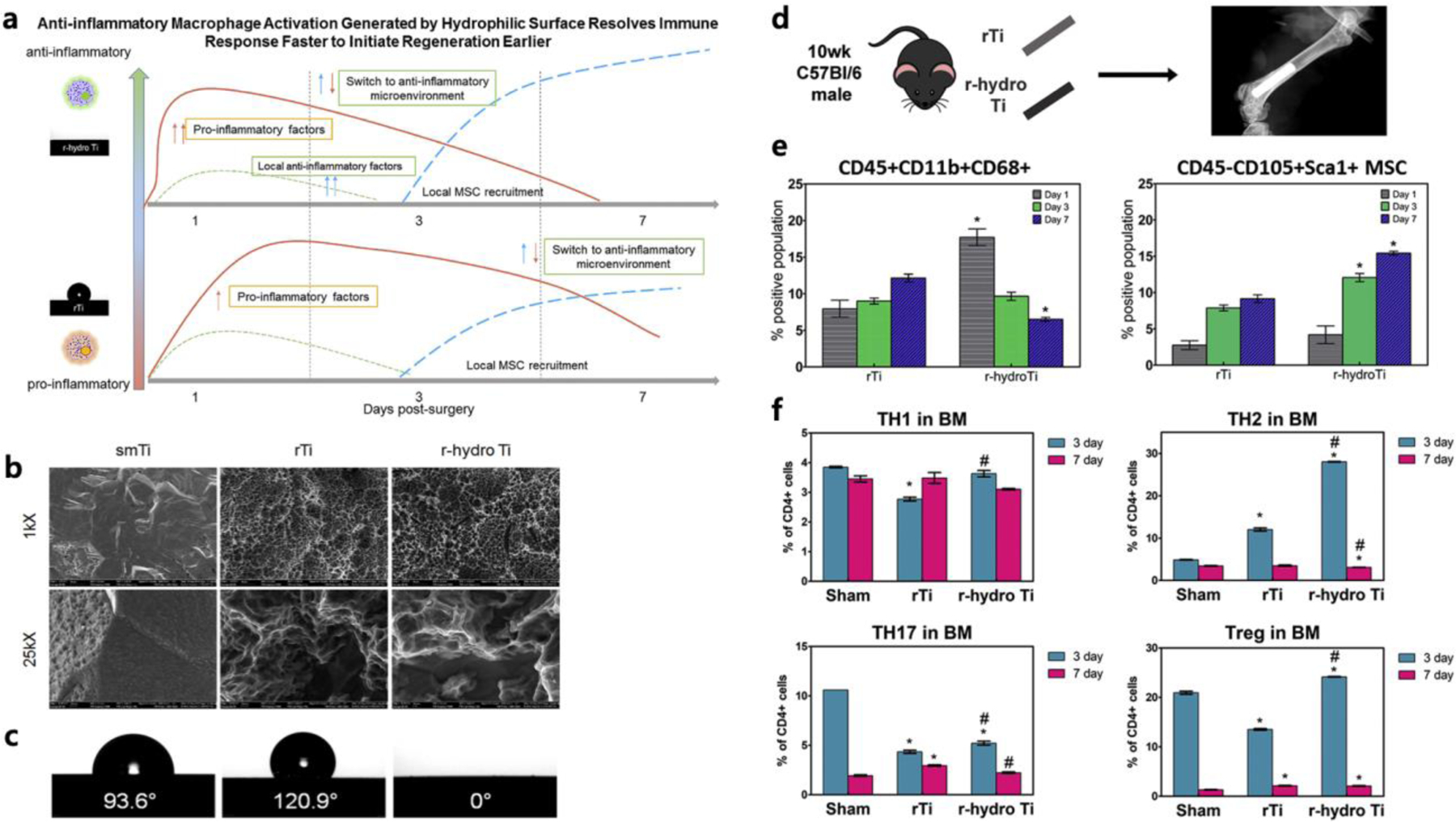Figure 3.

Anti-inflammatory macrophage activation generated by biomaterial surface properties. a) Summary of immune response generated by a hydrophilic surface. b) Qualitative assessment of surface topography through scanning electron microscopy at 1kX and 25kX of Ti implants. c) Indirect measurement of surface wettability through contact angle of smTi, rTi, r-hydro Ti. d) Schematic of surgery. e) CD45 + CD11b + CD68 + Macrophages adhered to implant. Changes in CD45−CD90+Sca-1+ MSCs at implant surface *p < 0.05 vs. rTi. f) Changes in T-cell populations at implant, (n = 6) The greatest changes in T-helper cell populations with surface properties was found in anti-inflammatory Th2 and Treg populations. The greatest percent of these populations were found on r-hydro Ti implants. *p < 0.05 vs. sham, # vs. rTi. (smTi = smooth titanium, rTi = rough titanium, r-hydro Ti= rough-hydrophilic titanium). Reprinted with permission from [158].
